Curriculum Department Synopsis
Curriculum
The ADNOC School of Abu Dhabi curriculum consists primarily of high-level national American standards for each subject. We use the national Common Core Standards for Math and English, the national Next Generation Science Standards for Science, and the national SHAPE standards for PE. The Social Studies Department is using the Maryland State Standards to drive the content of their courses while borrowing from Common Core English Standards to drive skills. As of December 2014, our Fine Arts and IT departments are in the process of selecting a set of standards through which to build an impressive standards-based curriculum.
Our course offerings encourage students to work towards our wide range of AP level courses in their senior year. However, we have comprehensive course alternatives and electives that allow each student to create the most beneficial and relevant high school schedules for himself or herself as an individual.
Standardized Testing
ADNOC uses standardized testing to measure both our students’ progress and achievement so that we may allow data to guide individualized student instruction as well as to compare our students against local and international benchmarks. Starting in grade 10, our High School students take the PSAT and SAT tests, for which our Sas Al Nakhl campus also serves as a testing center for students from nearby schools. Our students also take and perform admirably on AP exams that currently span our Math, Science, Art, and Social Studies departments. Internal assessments such as trimesterly writing diagnostic tests, subject-based diagnostic tests, and general literacy diagnostic tests are used variably across our Elementary campuses to capture student body needs.
In 2014, ADNOC adopted The Measures of Academic Progress (MAP) test as our school-wide progress assessment for grades KG2-11. Its usage will allow teachers to utilize immediate feedback about the ability level of their students and will allow teachers and administrators to analyze the progress of individual students and student cohorts. It will be administered in November and April each academic year. 2015 will see trial testing of the globally recognized International Student Assessments (ISA) tests. The ISA test is designed to complement data from the MAP tests by providing international achievement benchmarks.
Teaching and Learning
In 2013, ADNOC undertook a pedagogical shift to align itself with international best practices for teaching and learning. A major component of this change in philosophy was a focus on students learning through meaningful projects rather than relying solely on memorization and test-taking. Our teachers to continue to refine their ability to create dynamic, integrated projects that ask students to consider real-world issues, think critically, plan for success, collaborate, innovate, and create. Project Based Learning is a key element of our vision and mission to nurture students who will leave ADNOC as effective and valued members of their society, their culture, and their workforce.
At ADNOC, we instill current teaching best practices in our teachers by highlighting the benefits of dynamic lessons for students, by maintaining a common planning and instructional vision, and by providing ongoing support to teachers. Our teachers construct meaningful high-quality lessons by ensuring that each student contact period contains student-friendly objectives, an opening, a student-centered core, and a closing. Teachers also reflect on the lesson’s effectiveness afterwards to look for areas of re-planning or re-teaching.
In 2014, ADNOC also began a larger focus on reading across the curriculum in all grades and on stronger foundational literacy skills at the Elementary level. This move is in accordance with our strategic plan that was created in accordance with our accreditation from MSA and reflects the needs of our student population.
Elementary
In 2010, ADNOC schools opened its first elementary school Abu Dhabi. Since that time, we have added 3 additional campuses in Ruwais, Ghayathi and Madinat Zayed. The goal of ADNOC Schools is to prepare every school learner for admission into colleges and universities of the highest standing both here and throughout the world.
In order to reach the goal of creating the highest standard student, starting at the elementary level, our students receive rigorous instruction using the American Common Core Standards and Next Generation Science Standards.
Middle School
The Middle School Curriculum at ADNOC Schools is focused on developing the academic, social, and technical skills of our students by providing them a solid foundation with which to enter high school. Students in middle school are provided a risk-free environment in which to think critically, use inquiry, and collaborate.
High school
The High School Curriculum at ADNOC Schools is focused on allowing students to pursue specific academic areas of interest while maintaining a holistic approach to their education. Students are encouraged to take as many Advanced Placement classes as they feel comfortable and are provided course enrollment and college selection guidance by school counselors. Students who graduate from ADNOC Schools are prepared to excel in the Petroleum Institute or in other internationally-recognized tertiary institutions.
Collage Prep
With its STEAM vision, Advanced Placement courses, and rigorous graduation requirements, ADNOC Schools seeks to prepare students for success at the Petroleum Institute and other globally renowned tertiary institutions. In addition to a targeted, individualized program of studies, numerous college-information and prep sessions and courses supplement our students’ readiness for life after graduation.
Special Education Needs Department
Introduction
The SEN Department has been established at the ADNOC School of Abu Dhabi in 2011 and falls in line with the school vision to provide all of its students with an appropriate and efficient education.
Federal Law No. 29 of 2006 was designed to protect the rights of individuals with a disability. It encourages the inclusion and integration of the individuals “with special needs” into whether public or private schools.
The department specializes in inclusion of students with learning difficulties and sets the approach for academic intervention and learning support in that regard.
In addition, the SEN department aims to enable the teaching staff to meet the specific learning needs of students, identify learning difficulties, and access consultation and support.
The goals of the SEN department
-
⦿ Increasing the participation of students in, and reducing their exclusion from, the cultures and curricula.
-
⦿ Restructuring the cultures, policies and practices so that they respond to the diversity of students.
-
⦿ Reducing barriers to learning and participation for all students.
-
⦿ Viewing the difference between students as resources to support learning, rather than as problems to be resolved.
-
⦿ Acknowledging the right of students to an education in their locality.
-
⦿ Emphasizing the role of the school in building community and developing values, as well as in increasing achievement.
-
⦿ Fostering mutually sustaining relationships between the school and the communities.
-
⦿ Recognizing that inclusion in education is one aspect of inclusion in society.
SEN department core function
When the school is providing academic intervention and learning support for SEN students, it will follow a Support Cycle for systematic planning. Each step of the Support Cycle is described below. At all steps in the cycle, schools will involve all those with significant information on the student’s needs, as well as those with expertise to assist in planning academic interventions. This includes parents, SEN & Inclusion experts, as well as teachers.
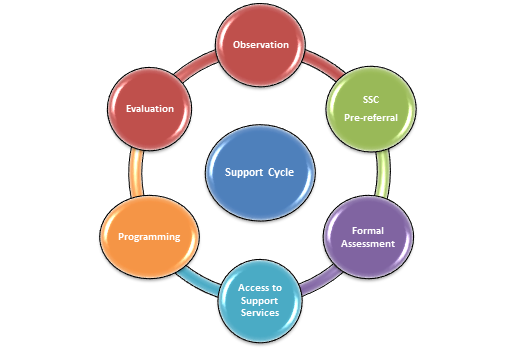
Pre-referral/ Student Support Committee:
A group of professionals from different disciplines who form a problem solving team to work together to help students who are experiencing academic and/or behavioral problems The committee meets once a week to generate ideas for intervention and to implement planned intervention strategies. The assessment of the intervention effectiveness for a particular student is based on 2, 4and 6 weeks basis. The SSC is a general pre-referral process which may or may not lead to referral for special education services, the testing and special education placement should be the last resort and should only come after appropriate interventions have been implemented, the results analyzed, and the outcomes found to indicate that further support is required.
Assessment of Educational Support Needs:
During the first trimester, the SEN department team will receive pre-referral from the Student Support committee and will conduct observation in the classes. If the teaching staff and the SEN team believe that a student displays learning difficulties, the first step, is a detailed assessment of student needs. An educational curriculum based assessment will be conducted by the SEN experts’ team and the classroom teacher. If the SEN experts judge that the child require a multidisciplinary assessment and intervention ( Speech and language, occupational therapy, psycho-educational), he will be referred to an external agent multidisciplinary team who will be performing standardized assessments on the school site with previous parental consent. The fees of the external agents will be covered by the parents.The Assessment will result in the creation of an Individual Education Plan (IEP). The IEP will describe the student’s individual needs and align those needs with an appropriate curriculum and effective instructional strategies.
Access to Support Services:
Schools are responsible for providing all learning support services called for in the IEP. The School SEN & Inclusion department as well as the teacher’s assistants and classroom teachers will play important roles in providing the required support.
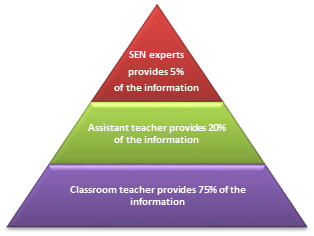
Programming:
Involves developing a model for delivering instruction based on the Individual Education Plan (IEP). This model includes defining what needs to be taught, how it is going to be taught. The classroom teacher, the assistant teacher and the special educator will be responsible of teaching it within the classroom. If the student requires specific therapy sessions such as; Speech and language therapy/ or occupational therapy may be provided by the external agent staff whether on the school site (within the classroom setting or as a pull out) or externally. A constant and close collaboration will be established with the providers of external services. The latter will be allowed to conduct school visits, classroom observation and team meetings upon the School management consent.
Evaluation:
As the IEP is implemented, the teachers and SEN experts should evaluate its effects to determine whether the desired outcomes are being achieved. The formal review meeting must be held at least three times during the school year for all students receiving additional support. Will attend those meetings all the parties involved with the student.
Special Education Categories
The following categories of disabilities are recognized the by UAE, Ministry of Education as categories of disabilities that qualify a student to receive special education programs and related services, if it can be demonstrated that the disability adversely affects the child’s academic performance:
Specific Learning Disabilities:
A specific learning disability means a disorder in one or more of the basic psychological processes involved in understanding or in using language spoken or written that may manifest itself in the imperfect ability to listen, think, speak, read, write, spell, or perform mathematical calculations and/or mathematical reasoning, including conditions such as perceptual disabilities, brain injury, minimal brain dysfunction, dyslexia, and developmental aphasia.
Physical and health related disability:
This means physical and health problems which are chronic or severe in a manner that they lead to poor and limited functionality and adversely affect the educational performance of the student such as: (asthma, attention deficit disorder with hyperactivity, diabetes, heart disease, epilepsy, leukemia, cerebral palsy, renal failure, HIV, and head injuries etc).
Sensory Impairment:
Visual impairment: means impairment in vision that, even with correction, adversely affects a child’s educational performance. The term visual impairment includes both partially sighted and blindness. Hearing impairment including deafness: means an impairment that adversely affects educational performance; may be permanent or fluctuating
Speech and Language Disorders:
Speech and language disorders means having a communication disorder such as stuttering, impaired articulation, language impairment, or a voice impairment that adversely affects a child’s educational performance.
Autism Spectrum Disorders:
Autism Spectrum Disorders (ASD), also known as Pervasive Developmental Disorders (PDDs), cause severe and pervasive impairment in thinking, feeling, language, and the ability to relate to others.
Emotional and Behavioral Disorders:
An emotional and behavioral disorder means a condition exhibiting one or more of the following characteristics over a long period of time and to a marked degree that adversely affects a child’s educational performance: (a) an inability to learn that cannot be explained by intellectual, sensory, or health factors; (b) an inability to build or maintain satisfactory interpersonal relationships with peers and teachers; (c) inappropriate types of behavior or feelings under normal circumstances, (d) a general pervasive mood of unhappiness or depression, and (e) a tendency to develop physical symptoms or fears associated with personal or school problems. The term includes schizophrenia. The term does not apply to children who are socially maladjusted, unless it is determined that they have an emotional disturbance.
Intellectual Disabilities:
Intellectual disabilities, means having significantly below average general intellectual functioning, existing along with deficits in adaptive behavior which are manifested during the developmental period and adversely affect a child’s educational performance.
Definition for Gifted and Talented:
Gifted and Talented refers to having outstanding ability, or a great deal of willingness in one or more areas of intelligence, or creativity, or academic achievement or special talents and abilities.
Exclusion
The term disability and or placement in special education does not apply to students who are experiencing learning problems that are primarily the result of the following circumstances:
-
⦿ Environmental factors
-
⦿ Cultural factors including not being a native Arabic speaker
-
⦿ Economic disadvantage Students who have experienced academic failure.
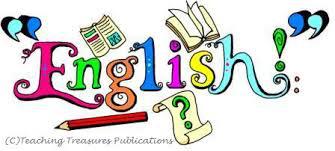
The vision of the elementary English language arts (ELA) program at ADNOC schools is to provide our primary school students with the foundational skills and understandings needed to achieve college and career readiness and to be a “literate person of the 21st century.” According to the Massachusetts Curriculum Framework for English Language Arts and Literacy (2011), the source of ADNOC schools’ curriculum standards, the achievement of this vision is predicated upon academically rigorous ELA classrooms. To that end, students in the elementary ELA classrooms at ADNOC schools regularly undertake close and critical reading of both informational and literary grade-level texts. They are also encouraged to actively engage with these texts in a number of ways that not only foster and demonstrate their understandings of the texts but also develop the “skills in reading, writing, speaking, and listening that are the foundation for any creative and purposeful expression in language.” Consequently, the expectations placed on students in the elementary ELA classrooms are high, but these high expectations are grounded in the firm belief that students achieve their true potential only if they are truly challenged.
To maintain this challenging learning environment, instruction in the elementary ELA classrooms is standards-based. As was mentioned above, these standards are derived from the Massachusetts Curriculum Framework for English Language Arts and Literacy. Massachusetts is one of the leading states in American education, regularly performing at the top of all educational metrics in the U.S. The Massachusetts Framework is a combination of Massachusetts standards and the Common Core State Standards (CCSS). All of the textbooks, supplementary resources, lesson plans, and assessments used in the elementary ELA classrooms are aligned to these standards. In fact, because of this alignment, an ADNOC student in the third grade, for example, could be placed in a Massachusetts third-grade ELA classroom on any given day and be completely prepared to succeed academically.
Along with utilizing a standards-based approach to learning, the elementary ELA teachers endeavor every day to use a variety of instructional methods that maintains active engagement, cooperative learning, and student-centeredness. These methods not only ensure that expectations remain high for all students but also that learning is appropriate and enjoyable for each child. Indeed, through these instructional methods, teachers are able to differentiate their instruction to the particular needs of each child. A few examples of these instructional methods are reading circles, classroom-learning centers, and learning clusters. Little classroom time is spent on lecturing content to the students. Instead, students devote the majority of their time to engaging in activities related to English language arts. These activities allow students to apply the skills they have learned and demonstrate the knowledge they have gained.
The content of the elementary ELA classes consists of reading, writing, speaking and listening. These four categories, however, are not taught separately but rather as complementary components of the daily ELA lessons. Foundational content, such as phonics, spelling, and grade-level vocabulary, are also incorporated into these lessons. In addition, because literacy is an emphasis of the Massachusetts Framework in all subjects, elementary school teachers are afforded opportunities for cross curricular activities in which reading content from other subjects, such as social studies, science, and IT, are used in ELA classes.
English instruction by grade level
| Grade | Number of periods per week |
|---|---|
| KG1 | 8 |
| KG2 | 8 |
| First | 9 |
| Second | 9 |
| Third | 9 |
| Fourth | 10 |
| Fifth | 10 |
Arabic Language Course Description
In ADNOC Schools and in particular at the Department of Arabic Language and Social Studies we are anxious in giving out generations that are proud of their roots and conserve their identity and contribute in building a better future for their country
Arabic Language and Social Studies department in ADNOC Schools keen to come up with generations proud of originality and maintain the identity and participate in building the future of their homeland.
We look out for providing a high level of education services that keep up with challenges of the future in an incentive environment to be creative, through an active educating leadership and a good qualified team that communicate actively with students, parents and local community to work all together in building generations that are holding our religious values and well conserving our traditions and national identity
We work for expanding the culture of distinction and(work to achieve in learning and teaching system ).are doing that it will be present in the education and learning system
Our goals:
- ⦿ Building a generation that believes in the Islamic and Arab identity and strengthen the system of educational values among students.
- ⦿ Building believer Islamic identity generation system and strengthen the educational values among students.
- ⦿ Consolidate the positive trends in student behavior and implanting self-discipline and self-confidence.
- ⦿ Strengthen links between members of the school community.
- ⦿ Develop learning Arabic in order to compete with the worldwide learning levels.
- ⦿ Usage of modern teaching methods (linked-learning).
- ⦿ Consolidation of the relationship between parents and other communities related to school work.
The most important thing to know about the peculiarities of the Arabic language teaching curriculum:
- ⦿ The Department of Arabic language is interested in applying the standards of Abu Dhabi Education Council.
- ⦿ Usage of the Ministry of Education textbooks.
- ⦿ Preparation of worksheets that includes various activities, such as: (differentiation / classroom activities / homework / external texts).
- ⦿ The dedication of separate periods for reading stories and for library each week.
- ⦿ The dedication of cooperative periods with parents during the school year.
- ⦿ The participation of students in the visual words contest (Star reading).
- ⦿ The participation of students in events such as: the National Day, the Arabic language week and the campaign of Abu Dhabi read.
- ⦿ The interest in all types of assessment: pre-diagnostic, continuous assessment, formative assessment, summative assessment and self-assessment.
- ⦿ The school follows the EMSA test of Abu Dhabi Education Council.
Mathematics is the most beautiful and the most powerful creation of the human spirit
Stefan Banach
Mathematics is about pattern and structure;It helps us recognize patterns and to understand the world around us. It is about logical analysis, deduction, calculation within these patterns and structures. Mathematics is an exciting and challenging subject which continues to develop at a rapid rate across many research areas. It has a natural elegance and beauty. Taking a real world problem and creating and applying mathematical models to aid understanding is often hugely satisfying and rewarding. When patterns are found, often in widely different areas of science and technology, the mathematics of these patterns can be used to explain and control natural happenings and situations. Mathematics has a pervasive influence on our everyday lives, and contributes to the wealth of the country. Mathematics plays a vital, often unseen, role in many aspects of modern life. If you enjoy Math at school, then you will probably enjoy Math at university even more.
We at ADNOC Schools Elementary campuses follow Common Core State Standards. Our Math program incorporates usage of ICT and engages students as it strengthens their understanding of Mathematics. It uses problem based interactive learning as well as visual learning to deepen conceptual understanding. There are animated Visual Learning Bridge Videos per Topic and per lesson which have eTools and an animated glossary that enhances math vocabulary words and definitions. The aligned Math Common Core Program incorporates bar diagram visual tools to help students be better problem solvers, and it provides data-driven differentiated instruction to ensure success for every student. Parents have easy access to results and visual materials from home at all times by means of the student online access.
ADNOC schools are moving towards STEM (Science, Technology, Engineering and Math) The American curriculum will act as a base as we, further develop our scholars into holistic thinkers and planners for the future. We encourage all our educators to use small group instruction as a means of delivering the curriculum to our pupils. Children are encouraged to use phrases such as “I CAN “to take ownership over their own learning.
We in the Math Department believe in giving attention to the smallest detail to prepare your child for the future using 21st century learning styles, along with formative and summative assessments.
We are firm believers “That Every Child Matters”. We will go through every possible strategy to ensure that your child succeeds at our schools.
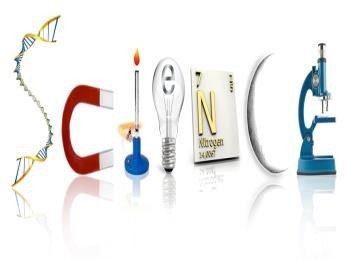
“The important thing is to never stop questioning.”
Albert Einstein
Science, sprouting from the root word “scientia,” which means knowledge, offers facts that explain the world around us. With a challenging and versatile curriculum our students are faced with facts, skills and concepts that intrigue and make students wonder “why?”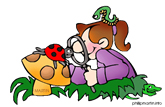
The science curriculum from KG-Grade 5 will be based on a set of standards provided by NGSS or the Next Generations Science Standards. By adapting these standards we allow ourselves and our student’s freedom. Meaning, we are no longer bound by text books. We are provided with the opportunity to branch out and enlarge the scope of the skills and concepts we teach in the class room. The standards ensure that our students are learning what science is today. Science changes and evolves over time. The science concepts people have learned long ago in the classroom are only basis for what we teach now, and we now have a much broader spectrum of scientific standards to abide by. We will use the text book as a reference guide for students to fall back on, if need be, however ; teaching will be done mostly via outside resources and hands on activities.
The Next Generation Science Standards will allow us to increase students’ achievement, give students the opportunity to research on their own obtaining information independently and making them independent thinkers, synchronizing English, Math and Science and to ensure college and career readiness.
Useful Links:
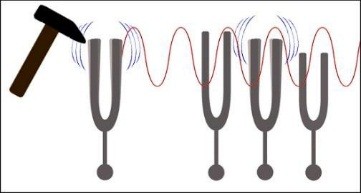 In grade 1, students will explore Physical Science by investigating why things vibrate and what is light and how it is important. In Life Sciences, students will design solutions to solve problems by learning from their surroundings. They will also determine how parents and their children are alike and how they are different. Finally, in Earth Sciences students will observe and explore why the moon appears when the sun does not, and is there the same amount of daylight all year. Why or why not.
In grade 1, students will explore Physical Science by investigating why things vibrate and what is light and how it is important. In Life Sciences, students will design solutions to solve problems by learning from their surroundings. They will also determine how parents and their children are alike and how they are different. Finally, in Earth Sciences students will observe and explore why the moon appears when the sun does not, and is there the same amount of daylight all year. Why or why not.
In grade 2, Physical Science allows students to observe materials and their different properties. This allows students to investigate what the function of these materials are and how they are important to us. In Life Sciences, students will observe and compare where different animals live and why. Lastly, in Earth Sciences students will research and provide evidence about how the Earth changes overtime. Also, students will travel the world exploring the seas and the different landforms.
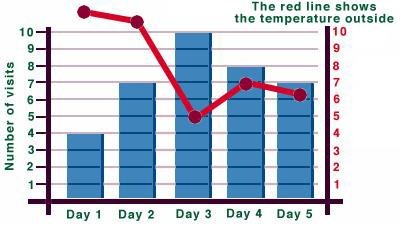 In grade 3, Physical Science intrigues students to inquire about force, its types and how it may interfere with life. Life Sciences allow students to discover that all organisms are different, but are all alike each possessing birth, growth, reproduction and death. This feeds into traits of organisms and how these traits can be affected by the external environment. Earth Sciences challenge students with tables and graphs so that they may explore weather around the world. After becoming familiar with weather, students will learn about extreme weather conditions and will design a solution to solve the effects of disasters.
In grade 3, Physical Science intrigues students to inquire about force, its types and how it may interfere with life. Life Sciences allow students to discover that all organisms are different, but are all alike each possessing birth, growth, reproduction and death. This feeds into traits of organisms and how these traits can be affected by the external environment. Earth Sciences challenge students with tables and graphs so that they may explore weather around the world. After becoming familiar with weather, students will learn about extreme weather conditions and will design a solution to solve the effects of disasters.
In grade 4, Physical Science will ask students to construct explanations about energy and speed and observe how energy can be transferred from one place to another. Also, Physical Science describes the patterns of waves and how they are used to transfer information. Life Sciences offer the students an understanding of how organisms use their internal and external structures to function and how information is transferred from their brain to the rest of their senses. 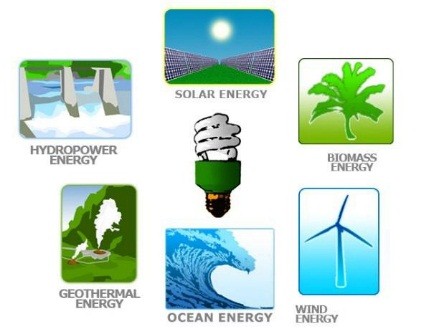 Lastly in Earth Sciences, students will explore the past regarding fossils and rock formations. Students will also make observations and measure the effects of weathering and erosion on the Earth. Students will obtain information regarding fossil fuels and energy and how using them effects our environment. Finally, students will generate solutions to reduce the impacts that planet Earth has on humans.
Lastly in Earth Sciences, students will explore the past regarding fossils and rock formations. Students will also make observations and measure the effects of weathering and erosion on the Earth. Students will obtain information regarding fossil fuels and energy and how using them effects our environment. Finally, students will generate solutions to reduce the impacts that planet Earth has on humans.
 In grade 5, in Physical Science students will model and describe that although some particles are too small to be seen, they still exist. Students will use evidence to measure and graph that if a state of matter changes its mass remains the same. Physical Science also gives students the opportunity to describe how animals use energy to function and grow.
In grade 5, in Physical Science students will model and describe that although some particles are too small to be seen, they still exist. Students will use evidence to measure and graph that if a state of matter changes its mass remains the same. Physical Science also gives students the opportunity to describe how animals use energy to function and grow.  In Life Sciences, students will collect evidence and support that plants get energy from air and water. Finally, Earth Sciences require students to argue why the sun is brighter than other starts. Also, Earth Sciences will oblige students to develop models to describe ways the spheres of the Earth interact. Lastly, Earth Science will create protectors of the environment by indulging students in ways communities use science to protect the Earth and its environment.
In Life Sciences, students will collect evidence and support that plants get energy from air and water. Finally, Earth Sciences require students to argue why the sun is brighter than other starts. Also, Earth Sciences will oblige students to develop models to describe ways the spheres of the Earth interact. Lastly, Earth Science will create protectors of the environment by indulging students in ways communities use science to protect the Earth and its environment.
English I
This course is designed to draw student attention to the craft of story-telling. Students completing this course will focus on writing, telling, and deconstructing narratives as they explore various narrative forms, including short stories, oral anecdotes, play scripts, memoirs, epic poems, films, and novels. Using their acquired knowledge, students will create their own narrative pieces. Using these narrative works as a base, English I students will discover, discuss, and integrate the unit themes of Coming of Age, Power, Cultural Differences and Perseverance as they master the skill of analyzing literature and informational texts, as well as becoming proficient speakers, listeners, and problem solvers.
English II
This course is designed to allow students to develop and add to their analytical skill set while producing dynamic presentations, exploring common topics through multiple artistic mediums, and undertaking research projects. An argumentative writing focus underlines student creation of argumentative essays, advertisement campaigns, persuasive texts portfolios, and inspirational speeches. English II students will discover, discuss, and integrate unit themes such as Justice, Reputation, Human Rights, Overcoming Adversity, Responsibility, and Dreams.
Arabic Language Course Description
Arabic 9-Arabic I
This course is designed by the Ministry of Education to enable the Arab native student to acquire communicative proficiency in each of the four language skills: listening, speaking, reading, and writing. The course is designed to be taught using Arabic itself. The method adopted in the grammar book “Alttatbiqat Al lughawiyyah” provides lessons by giving a sample for the uses of the topic to be discussed and taught in a clear and organized form. This is followed by “Notes” in which observations are derived from the examples in the table. At the end of the Notes, a summary of the information gained in the lesson is given to reinforce the student’s understanding. The lesson is concluded by an exercise to help reinforce the rules of grammar.
Arabic 10-Arabic II / Arabic 11-Arabic III
Continuing the Ministry of Education Arabic textbook program, this course is intended to help learners reach an advanced level of proficiency. The texts are composed by writers from across the Arab world and address a range of social, religious, and literary themes and represent a range of genres, styles, and periods. Although the book focuses primarily on modern Arabic, classical Arabic texts have been incorporated into some of the lessons to introduce students to the continuity of the language throughout its history. The Grammar part of the Arabic two parts textbook “Mafaheem Lughawiyyah” presents vocabulary-building drills and contextualized explanations of grammar, with exercises designed to push students toward independent learning.
Arabic 12- Arabic IV
Continuing the Ministry of Education Arabic textbook program, this course is intended to help learners reach an advanced level of proficiency. The texts are composed by writers from across the Arab world and address a range of social, religious, and literary themes and represent a range of genres, styles, and periods. Although the book focuses primarily on modern Arabic, classical Arabic texts have been incorporated into some of the lessons to introduce students to the continuity of the language throughout its history. The Grammar part of the Arabic two parts textbook “Mafaheem Lughawiyyah” presents vocabulary-building drills and contextualized explanations of grammar, with exercises designed to push students toward independent learning. The students will be prepared to undergo the MOE official exam in May.
Arabic 9 Ab initio: Arabic for Non-Native Speakers
Arabic 10 Ab initio-Arabic for Non-Native Speakers
Arabic 11 Ab initio-Arabic for Non-Native Speakers
This comprehensive course in modern Arabic “Uhibbul-Al Arabiyyah” focuses on teaching both the script and the spoken language. Designed for both individual and classroom use and assuming no previous knowledge of the language, it aims to provide the student with a general understanding of the language’s overall structure as well as the means for basic communication. The unique combination of step-by-step grammar and practical exercises emphasizes a functional approach to mastering a new script and acquiring vocabulary. Everyday situations and local customs are explored through dialogues, texts, and drawings.
Arabic IV – Ab initio: Arabic for Non-Native Speakers
This comprehensive course in modern Arabic “Uhibbul- Al Arabiyyah” focuses on teaching both the script and the spoken language. Designed for both individual and classroom use and assuming no previous knowledge of the language, it aims to provide the student with a general understanding of the language’s overall structure as well as the means for basic communication. The unique combination of step-by-step grammar and practical exercises emphasizes a functional approach to mastering a new script and acquiring vocabulary. Everyday situations and local customs are explored through dialogues, texts, and drawings. The students will be prepared to undergo the MOE official exam in May.
Pure mathematics is, in its way, the poetry of logical ideas.
Albert Einstein
Students at ADNOC schools learn to appreciate the beauty of mathematics; the universal language, through discovering its role in the environment around them and understanding its importance to their present and future.
In Middle school math, students build their understanding of mathematical concepts needed for upper level algebra and geometry. They accumulate knowledge and skills to investigate real mathematical phenomena and solve some real-life problems. Technology is integrated in the mathematics curriculum through a variety of tools and resources. The mathematics curriculum is based on common core state standards and Massachusetts for mathematical content and practices.
Students learn how to use mathematics with other subjects to promote a STEAM (Science, Technology, Engineering, Art, and Mathematics) education.
Project based learning is implemented in all courses. Students explore concepts, draw conjectures and learn by doing. We believe that no student should be left behind. Math teachers always give constructive feedback to students and support during and after school. Students can choose between two pathways depending on their readiness and college choices.
⦿ The “compacted” pathway, in which students would complete the content of 7th grade, 8th grade, and the High School Algebra I course in grades 7 (Compacted 7th Grade) and 8 (8th Grade Algebra I), it will enable them to reach Calculus or other college level courses by their senior year. This pathway is recommended to students who wish to enter college and career fields in the areas of STEM (Science, Technology, Engineering, and Math).

⦿ The regular pathway in which students would complete the High School Algebra I course in grade 9, this pathway will lead to pre-calculus or FST in grade 12 thus to preparation for college and career readiness. It is recommended to students who wish to enter college and career fields related to Humanities, Social Sciences, or Arts.

Middle School Courses:
Mathematics I or Grade 6 Math
This course builds skills and concepts using incremental instruction, practice and review to ensure mastery of basic mathematical skills. The course enhances students’ understanding of ratios, proportional relationships, division of fractions, and the notion of number to the system of rational numbers, which includes negative numbers. Students write, interpret, and use expressions and equations. They also develop their understanding of statistical thinking.
Mathematics II or Grade 7 Math
This course is designed to prepare students for Algebra. It develops students’ understanding and application of proportional relationships, operations with rational numbers, expressions and linear equations. Students solve problems involving scale drawings and informal geometric constructions. They work with two- and three-dimensional shapes to solve problems involving area, surface area, and volume. They draw inferences about populations based on samples.
Prerequisites: Mathematics I
Pre-Algebra
This course is offered to 8th graders who choose the regular pathway. It is designed to reinforce and build upon accumulated mathematical skills with additional advanced computation, including an emphasis on algebraic concepts. The course topics include fractions, decimals, percent, positive integers, negative integers, rational numbers, ratios, proportions and solving algebraic equations. Students develop and expand problem-solving skills (creatively and analytically) in order to solve word problems. Successful completion of this course prepares students for success in Algebra I.
Prerequisites: Mathematics II
Algebra I
This course is offered to 8th graders. The fundamental purpose of this course is to formalize and extend the mathematics that students learn in the middle grades. The course extends understanding of linear and exponential relationships by contrasting them with each other and by applying linear models to data that exhibit a linear trend. Students are engaged in methods for analyzing, solving, and using quadratic functions. Algebra I topics include relationships between quantities, reasoning with equations, linear and exponential relationships, descriptive statistics, expressions and equations, quadratics functions and modeling.
Prerequisites: Mathematics II
Grade 6 Science
In this course, students will be exposed to units from four scientific disciplines; Biology, Physics, Chemistry and Ecology. This course will introduce students to how to think and act like a scientist. Students will learn how to put their questions and queries into action in a proper laboratory setting. Students will learn many soft skills that a scientists should attain i.e. organizing, planning, evaluating, analyzing, concluding. With the monitoring and support of their teachers, students will experience scaffolded and inquiry based learning for their first time in science.
Grade 7 Science
In this course, students will build on their acquired knowledge and skills from grade 6 Science by being exposed to the same four scientific disciplines; Biology, Physics, Chemistry and Ecology. Students will correlate the acquired knowledge and skills to the relevant scientific careers available around them. Students will be introduced to new systems and theories across the four disciplines. The course will bolster student’s practical knowledge and facilitate the implementation of proper scientific method.
Grade 8 Science
In this course, students will continue to build on their acquired knowledge and skills from previous science courses in the fields of Physics, Chemistry, and Biology. Students will learn science from a multi-disciplinary perspective connecting concepts and applying relative skills. This course will emphasize on physical science that is tangible to the surrounding physical world. Upon completion of this course, students will establish a scientific threshold in order to advance in any of the three scientific disciplines in high school.
Summer Reading
Summer Reading for English:
Welcome students! Thank you for taking the time to complete this important reading assessment over your summer vacation.
Please choose the correct link below and complete the correct assignment as detailed in the information packet. Thank you!
*Grade 6 going into Grade 7 [PDF attached]
*Grade 7 going into Grade 8 [PDF attached]
*Middle School students [PDF attached]
Math Summer Packet
Summer Practice for Math:
While we certainly understand and support the need for kids to enjoy a summer break from schoolwork, some math work over the summer is beneficial; perhaps even needful or essential for some students.
In order to ensure that you are prepared for the next math course in the sequence of study, it is important that you take time during summer break to review the math concepts you have learned this school year. You are encouraged to complete the summer math packet for the course you are taking next year. However, you also have other options. You may choose to review using online textbook resources, use applications, websites or even take online practice quizzes throughout the summer.
Please see the link below as your child is required to practice the assigned basic concepts according to the grade he joins next year. Thank you!
Download [PDF Attached]
English III
This course is designed to allow students to extend their analytical skill set and delve into more complex research. An informative/explanatory focus will run throughout the year, allowing students to critique and produce biographies, newspaper reports, mini-lessons, and formal research papers. Students will tackle themes such as Environment, Types of Conflict, Social Class, and Government.
English IV
This year, students will build their academic ability through a focus on writing for different purposes, analyzing texts, and the reading of both literature from different cultures and ‘everyday’ informational texts such as instruction manuals, recipes and guidebooks. They will complete two thematic units during the year, Adaptive Communication and Cultural Diversity. In both units, there will be analytical quizzes, opportunities for presentation and leading discussions, writing essays and a major project that will require collaboration with other students, demonstrating critical thinking, being creative, and presenting these conclusions to peers and teachers.
Arabic 9-Arabic I
This course is designed by the Ministry of Education to enable the Arab native student to acquire communicative proficiency in each of the four language skills: listening, speaking, reading, and writing. The course is designed to be taught using Arabic itself. The method adopted in the grammar book “Alttatbiqat Al lughawiyyah” provides lessons by giving a sample for the uses of the topic to be discussed and taught in a clear and organized form. This is followed by “Notes” in which observations are derived from the examples in the table. At the end of the Notes, a summary of the information gained in the lesson is given to reinforce the student’s understanding. The lesson is concluded by an exercise to help reinforce the rules of grammar.
Arabic 10-Arabic II / Arabic 11-Arabic III
Continuing the Ministry of Education Arabic textbook program, this course is intended to help learners reach an advanced level of proficiency. The texts are composed by writers from across the Arab world and address a range of social, religious, and literary themes and represent a range of genres, styles, and periods. Although the book focuses primarily on modern Arabic, classical Arabic texts have been incorporated into some of the lessons to introduce students to the continuity of the language throughout its history. The Grammar part of the Arabic two parts textbook “Mafaheem Lughawiyyah” presents vocabulary-building drills and contextualized explanations of grammar, with exercises designed to push students toward independent learning.
Arabic 12- Arabic IV
Continuing the Ministry of Education Arabic textbook program, this course is intended to help learners reach an advanced level of proficiency. The texts are composed by writers from across the Arab world and address a range of social, religious, and literary themes and represent a range of genres, styles, and periods. Although the book focuses primarily on modern Arabic, classical Arabic texts have been incorporated into some of the lessons to introduce students to the continuity of the language throughout its history. The Grammar part of the Arabic two parts textbook “Mafaheem Lughawiyyah” presents vocabulary-building drills and contextualized explanations of grammar, with exercises designed to push students toward independent learning. The students will be prepared to undergo the MOE official exam in May.
Arabic 9 Ab initio: Arabic for Non-Native Speakers
Arabic 10 Ab initio-Arabic for Non-Native Speakers
Arabic 11 Ab initio-Arabic for Non-Native Speakers
This comprehensive course in modern Arabic “Uhibbul-Al Arabiyyah” focuses on teaching both the script and the spoken language. Designed for both individual and classroom use and assuming no previous knowledge of the language, it aims to provide the student with a general understanding of the language’s overall structure as well as the means for basic communication. The unique combination of step-by-step grammar and practical exercises emphasizes a functional approach to mastering a new script and acquiring vocabulary. Everyday situations and local customs are explored through dialogues, texts, and drawings.
Arabic IV – Ab initio: Arabic for Non-Native Speakers
This comprehensive course in modern Arabic “Uhibbul- Al Arabiyyah” focuses on teaching both the script and the spoken language. Designed for both individual and classroom use and assuming no previous knowledge of the language, it aims to provide the student with a general understanding of the language’s overall structure as well as the means for basic communication. The unique combination of step-by-step grammar and practical exercises emphasizes a functional approach to mastering a new script and acquiring vocabulary. Everyday situations and local customs are explored through dialogues, texts, and drawings. The students will be prepared to undergo the MOE official exam in May.
High school students at ADNOC schools discover the importance of mathematics in new perspectives. They continue to appreciate the many roles of mathematics in all the sciences. They learn how to use both qualitative and quantitative methods to analyze, evaluate, study and experiment.
Students continue to build their understanding of mathematical concepts needed for college, future careers, and life. They accumulate knowledge and skills to investigate real mathematical phenomena and solve more complex real-life problems. Technology is essential in the mathematics curriculum through a variety of tools and resources and especially the Computer Algebra System, and the graphing calculator. The mathematics curriculum is based on common core state standards for mathematical content and practices.
Students learn how to use mathematics with other subjects to promote a STEAM (Science, Technology, Engineering, Art, and Mathematics) education.
Project based learning is implemented in all courses. Students explore concepts, draw conjectures and learn by doing. We believe that no student should be left behind. Math teachers always give constructive feedback to students and support during and after school. Students can choose between two pathways depending on their readiness and college choices.
⦿ The “compacted” pathway, in which students would complete the content of 7th grade, 8th grade, and the High School Algebra I course in grades 7 (Compacted 7th Grade) and 8 (8th Grade Algebra I), it will enable them to reach Calculus or other college level courses by their senior year. This pathway is recommended to students who wish to enter college and career fields in the areas of STEM (Science, Technology, Engineering, and Math).

⦿ The regular pathway in which students would complete the High School Algebra I course in grade 9, this pathway will lead to pre-calculus or FST in grade 12 thus to preparation for college and career readiness. It is recommended to students who wish to enter college and career fields related to English, Social Sciences, or the Arts.

High School Courses
Algebra I
This course is offered to 9th graders. The fundamental purpose of this course is to formalize and extend the mathematics that students learn in the middle grades. The course extends understanding of linear and exponential relationships by contrasting them with each other and by applying linear models to data that exhibit a linear trend. Students are engaged in methods for analyzing, solving, and using quadratic functions. Algebra I topics include relationships between quantities, reasoning with equations, linear and exponential relationships, descriptive statistics, expressions and equations, quadratics functions and modeling.
Prerequisites : Pre-Algebra
Geometry
This course is offered to 9th or 10th graders. The fundamental purpose of this course is to formalize and extend students’ geometric experiences from the middle grades. Students explore more complex geometric situations and deepen their explanations of geometric relationships, moving towards formal mathematical arguments. This course develops a structured mathematical system employing both deductive and inductive reasoning. Students experience mathematics as a coherent, useful, and logical subject that makes use of their ability to make sense of problem situations. The course topics include constructions, congruence, similarity, trigonometry, connecting Algebra and Geometry through coordinates, circles, applications of probability, and proofs.
Prerequisites : Algebra I
Algebra II
This course is offered to 10th or 11th graders. It is designed to extend students’ repertoire of functions to include polynomial, rational, and radical functions. Students work closely with the expressions that define the functions, and continue to expand and hone their abilities to model situations and to solve equations, including solving quadratic equations and solving exponential equations using the properties of logarithms. Students experience mathematics as a coherent, useful, and logical subject that makes use of their ability to make sense of problem situations. The course topics include polynomial, rational, and radical relationships, trigonometric functions, modeling with functions, inferences and conclusions from data.
Prerequisites: Algebra I and Geometry
Pre-Calculus
This course is offered to 11th or 12th graders. It is designed to extend and integrate concepts from algebra and geometry to prepare students for calculus or college mathematics courses. It enhances students’ ability to make sense of problem situations. The course topics include polynomial, rational, logarithmic and trigonometric functions, inverse and second-degree relations and their graphs, complex numbers, sequences and series.
Prerequisites: Algebra II
Functions, Statistics, and Trigonometry (FST)
This course is offered to 12th graders. It is designed to empower students to further develop and extend their knowledge of mathematics through the integration and application of statistical, trigonometric, and algebraic concepts. It emphasizes connections between various mathematical representations and topics, modeling and applications. It uses technology extensively with an emphasis on graphing calculators. This course examines a variety of mathematical topics including data analysis, functions, conditional probability, discrete random variables, binomial and normal distributions, trigonometry, and sequences and series.
Prerequisites: Algebra II
AP Calculus (AB and BC)
This course is offered to 12th graders. AP Courses enable students to pursue college-level studies while still in high school. AP provides willing and academically prepared students with the opportunity to earn college credit, advanced placement, or both. Students who attend AP courses are expected to take the Collegeboard AP exam. AP Calculus (AB) is primarily concerned with developing the students’ understanding of derivatives, integrals, limits, approximation, applications of calculus and modeling. The course topics are aligned with the Collegeboard AP Calculus (AB) course description. The course is intended to be challenging and demanding. The course uses Technology and especially graphing calculators to reinforce the relationships among the multiple representations of functions, to confirm written work, to implement experimentation, and to assist in interpreting results.
AP Calculus AB is roughly equivalent to a first semester college calculus course devoted to topics in differential and integral calculus. AP Calculus BC is roughly equivalent to both first and second semester college calculus courses; it extends the content learned in AB to different types of equations and introduces the topic of sequences and series. For more information please visit the College Board website.
Prerequisites: Pre-Calculus
Biology I
This introductory course will expose studants to the basics of Biology. The course focuses on exploring living things at a cellular level. Next, it demonstrates the field of genetics by highlighting the work done by Gregor Mendel and other scientists . It introduces students to three human body systems and its interrelated structure and function. Students will also study about classification of living things, taxonomy, ecosystems, and the flow of energy in ecosystems. [This course provides students with opportunities to] conduct hands-on activities and practical labs on relevant theories and topics through applying the scientific method.
HS Biology
This course is devoted to master the basic biological principles introduced in the Biology I course. The course is delivered using Problem Based Learning approaches. Throughout the year this course provides an opportunity for students to develop scientific process skills, laboratory techniques, and an understanding of the fundamental principles of living organisms. Students will explore biological science at an advanced level. They will master the cell’s structure and function, genetics and heredity[These topics are not covered in the HS Biology course], diversity of living organisms and their ecological roles, and an introduction to animal and plant[Plant Physiology Unit is covered under the concept of structure and function in living things] structure and function. This course will build on its pre-requisite course, Biology I, skills and knowledge.
Pre-AP Biology
This course is the first part of a two year course that covers the syllabus of AP Biology. AP Biology is an introductory college-level biology course. Students cultivate their understanding of biology through inquiry-based investigations as they explore a broad range of biological topics. This course is designed to build on previous knowledge acquired from its pre-requisite course, Biology I. It is highly recommended to complete the Chemistry I course before enrolling in this course.
AP Biology
The AP Biology course is the second year course that sums up the AP syllabus. It completes what Pre-AP Biology has started by balancing the breadth of content coverage with depth of understanding. The course emphasis is on shifting from a traditional “content coverage” model of instruction to one that focuses on enduring, conceptual understandings and the content that supports it. This approach will enable students to spend less time on factual recall and more time on inquiry-based learning of essential concepts, and will help them develop the reasoning skills necessary to engage in the science practices used throughout their study of AP Biology.
Chemistry I
This introductory course will expose students to the basics of Chemistry. Students will acquire new theoretical and experimental skills and abilities. Students will learn how to plan, conduct, and analyze scientific experiments by following the classical scientific method. Students will enhance their critical thinking skills and improve their ability to analyze data. This course starts by defining the simplest building unit of matter, the atom, all the way to how do atoms form compounds. The completion of this course will set a solid foundation for advanced courses in the field of chemistry.
HS Chemistry
This course is a build on the Chemistry principles acquired from its pre-requisite course, Chemistry I. It reiterates the fundamental concepts of chemistry but with more depth and empirical slant. Emphasis is placed on the utilization of mathematical, analytical, data acquisition, and communication skills as well as interdisciplinary approaches to discovery. Concepts and skills are put in practice by a strong emphasis on hands-on laboratory experiences and the integration of other branches of science.
Pre-AP Chemistry
This course is the first part of a two year course that covers the syllabus of AP Chemistry. The AP Chemistry course provides students with a college-level foundation to support future advanced course work in chemistry. Students cultivate their understanding of chemistry through inquiry-based investigations, as they explore various topics in the field of Chemistry. Significant emphasis will be placed on developing the student’s ability to solve problems through prediction and analysis.
AP Chemistry
The AP Chemistry course is the second year course that sums up the AP syllabus. The course is a rigorous math-based course, with a strong laboratory component. It completes what Pre-AP Chemistry has started by balancing the breadth of content coverage with depth of understanding. The course emphasis is on shifting from a traditional “content coverage” model of instruction to one that focuses on enduring, conceptual understandings and the content that supports it. This approach will enable students to spend less time on factual recall and more time on inquiry-based learning of essential concepts, and will help them develop the reasoning skills necessary to engage in the science practices used throughout their study of AP Chemistry.
Environmental Science
Environmental Science is a general science elective alternative to 2nd level Biology, Chemistry and/or Physics. The course provides students with the scientific principles, concepts and methodologies required to understand the interrelationships of the natural world, to identify and analyze environmental problems both natural and human-made, to evaluate the relative risks associated with these problems, and to examine alternative solutions for resolving or preventing them. Environmental science is interdisciplinary; it embraces a wide variety of topics from different areas of study. Yet there are several major unifying constructs, or themes, that cut across the many topics included in the study of environmental science.
Physics I
This introductory course demonstrates various physics concepts validated through experimental work. Students are encouraged to become better observers, collect data, interpret results, report and think critically. The students’ comprehension will be further extended with application of multiple print and technology resources. This course covers the core Physics content and offers a survey of contemporary conceptual foundation and a mathematically-based presentation of Physics.
HS Physics
This course is a build on the Physics principles acquired from its pre-requisite course, Physics I. This course is designed to help students understand and appreciate the inquiry nature of the physical sciences by having them “do science” rather than simply read about science or learn scientific facts. The focus is on science as a way of knowing. Students have both “hands-on” and “minds-on” opportunities to experience the nature of scientific inquiry in the physical sciences. Laboratory work is central to the course.
Pre-AP Physics
This course is the first part of a two year course that covers the syllabus of AP Physics. The students’ comprehension will be further strengthened with extensive numerical applications and practical work. The students will learn how to identify the connection between the concrete world and the world of Physics in terms of Mechanics and Electricity.
AP Physics C
The AP Physics course is the second year course that sums up the AP syllabus. This is a rigorous and academically challenging course work, which is taught in breadth and depth that provides an excellent first-year college-level calculus-based Physics education. Introductory differential and integral calculus is used throughout the course. The course includes a laboratory component which allows students reinforce their understanding of concepts, gain hands-on experimentation experience, develop their written communication skills, and develop their independent and critical thinking. By the end of the year, students will be prepared to take the AP Physics C Mechanics/Electricity exams.
Summer Reading
Summer Reading for English:
Welcome students! Thank you for taking the time to complete this important reading assessment over your summer vacation.
Please choose the correct link below and complete the correct assignment as detailed in the information packet. Thank you!
*Grade 8 going into Grade 9 [PDF attached]
*Grade 9 going into Grade 10 [PDF attached]
*Grade 10 going into Grade 11 [PDF attached]
*Grade 11 going into Grade 12 [PDF attached]
*High School students [PDF attached]
Math Summer Packet
Summer Practice for Math:
While we certainly understand and support the need for kids to enjoy a summer break from schoolwork, some math work over the summer is beneficial; perhaps even needful or essential for some students.
In order to ensure that you are prepared for the next math course in the sequence of study, it is important that you take time during summer break to review the math concepts you have learned this school year. You are encouraged to complete the summer math packet for the course you are taking next year. However, you also have other options. You may choose to review using online textbook resources, use applications, websites or even take online practice quizzes throughout the summer.
Please see the link below as your child is required to practice the assigned basic concepts according to the grade he joins next year. Thank you!
Download [PDF Attached]


